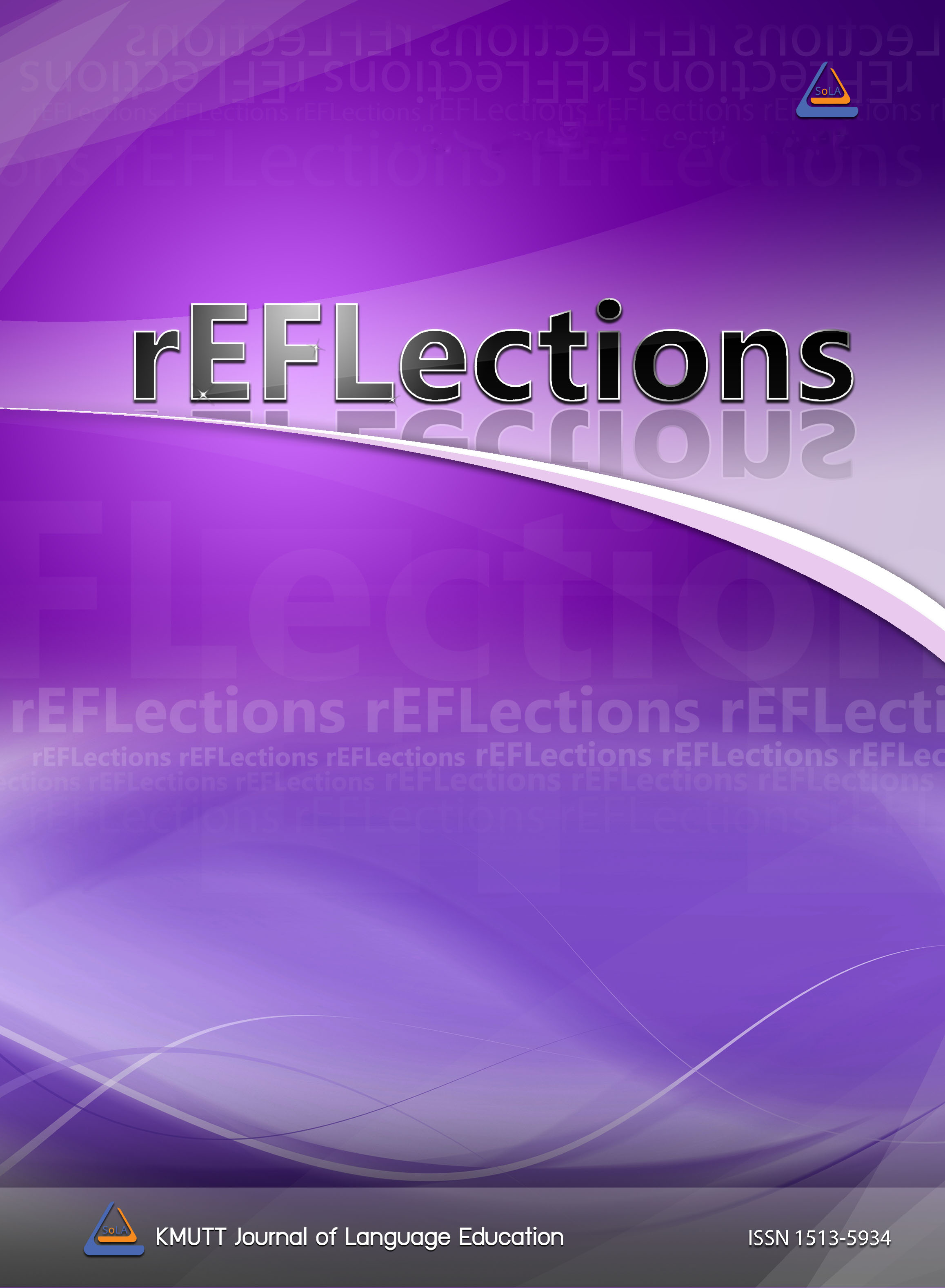Designing a Drug-Dispensing Test Task Using the SPEAKING Grid
Main Article Content
Abstract
Although the ethnography of speaking is one of the approaches used to analyze discourse (Schiffrin, 1994; Cameron, 2012), its benefits and uses can be applied in the field of language assessment when designing a drug-dispensing, classroom-based test task. In this article, pharmacy specialists and students functioning as members of the pharmaceutical profession community shared their beliefs and practices on how to dispense a drug appropriately and successfully. The SPEAKING grid was subsequently used as a principle to formulate a manual for administrators, raters, and test-takers. This article discusses the elements of the SPEAKING grid as a sample framework and the subjectivity of this test task for assessing pharmacy students. The elements of the SPEAKING grid described in the manual aided not only raters when administering the task but also test-takers when preparing and practicing it. The article concludes with the idea that the SPEAKING grid can be adapted to fit classroom-based language assessment purposes even though some shared norms presented in the dispensing context may not occur as authentic as in real life.
Article Details

This work is licensed under a Creative Commons Attribution-NonCommercial-NoDerivatives 4.0 International License.
References
Cameron, D. (2012). Working with spoken discourse. London: Sage Publications.
Dawson-Ahmoah, G. N. A. (2017). Analysis of the speech events in an M-Net African drama series-Tinsel. International Journal of Language and Literature, 5(2), 61-71.
Douglas, D. (2001). Three problems in testing language for specific purposes: Authenticity, specificity and inseparability. Studies in language testing: Experimenting with uncertainty: Essays in honour of Alan Davies. Cambridge: Cambridge University Press.
Edwards, T. (2019). English for cleaners: Developing and trialling an ESP lesson for learners with low-level English proficiency. The TESOLANZ Journal, 44-66.
Fulcher, G., & Davidson, F. (2007). Language testing and assessment: An advanced resource book. Oxon: Routledge.
Huang, B. H. (2018). PD in testing preparation for university ESL. The TESOL Encyclopedia of English Language Teaching, 1-6.
Hymes, D. (1964). Introduction: Toward ethnographies of communication. American Anthropologist, 66(6_PART 2), 1-34.
Kiesling, S. F. (2012). Ethnography of speaking. The Handbook of Intercultural Discourse and Communication, 29, 77.
McNamara, T. F., & Roever, C. (2006). Language testing: The social dimension. Malden, MA: Blackwell.
Mukhroji, M., Nurkamto, J., Subroto, H. E., & Tardjana, S. S. (2019). Pragmatic forces in the speech acts of EFL speakers at Kampung Inggris, Indonesia. Journal of Social Studies Education Research, 10(1), 38-60.
O’Sullivan, B. (2012). Assessment issues in languages for specific purposes. The Modern Language Journal, 96(s1), 71-88.
Pérez-Milans, M. (2018). Metapragmatics in the ethnography of language policy. The Oxford Handbook of Language Policy and Planning, 113-139.
Poedjiastutie, D., & Oliver, R. (2017). English learning needs of ESP learners: Exploring stakeholder perceptions at an Indonesian University. TEFLIN Journal, 28(1), 121.
Rivera, C. (Ed.). (1983). An ethnographic/sociolinguistic approach to language proficiency assessment. Multilingual Matters.
Schiffrin, D. (1994). Approaches to discourse. Oxford, UK: Blackwell.
Taramen, A. I. (2021). Hymes’ speaking analysis on the expressions used in Kabasaran dance. Journal of English Language and Literature Teaching, 5(2).
Vivek, S. V. (2018). Identifying the existing oral proficiency testing patterns [Doctoral dissertation, Christ University].
Wardhaugh, R., & Fuller, J. M. (2021). An introduction to sociolinguistics. John Wiley & Sons.


